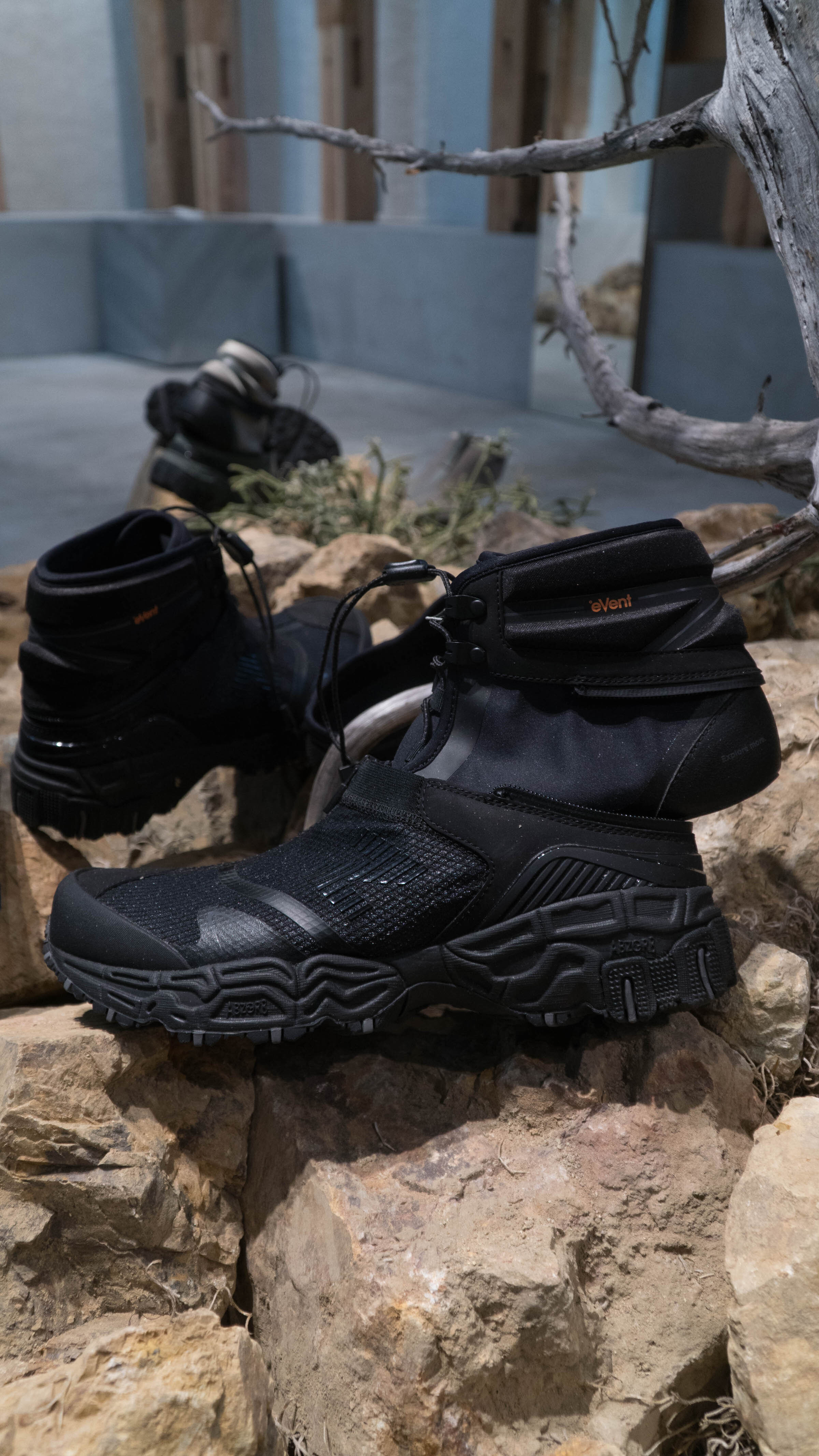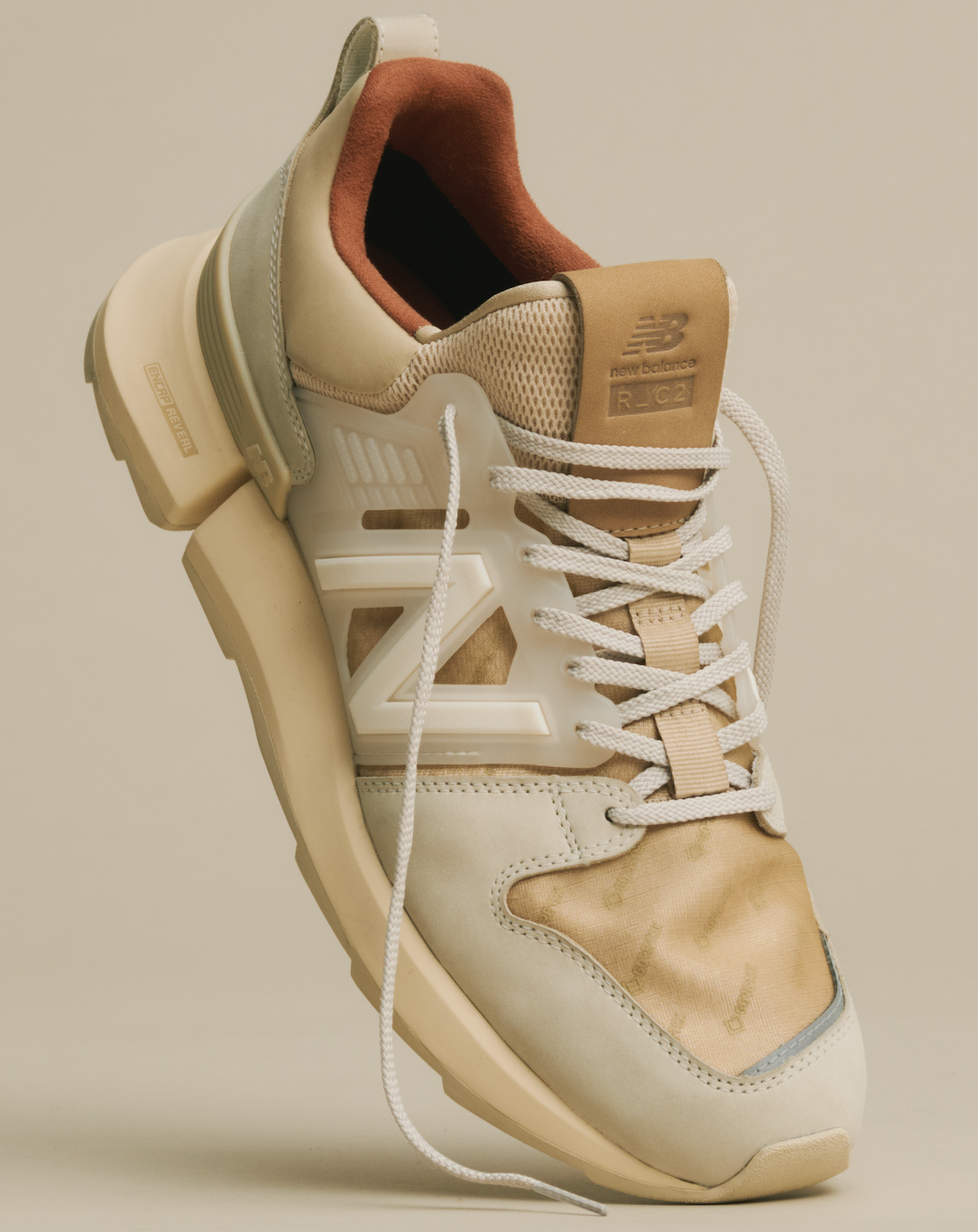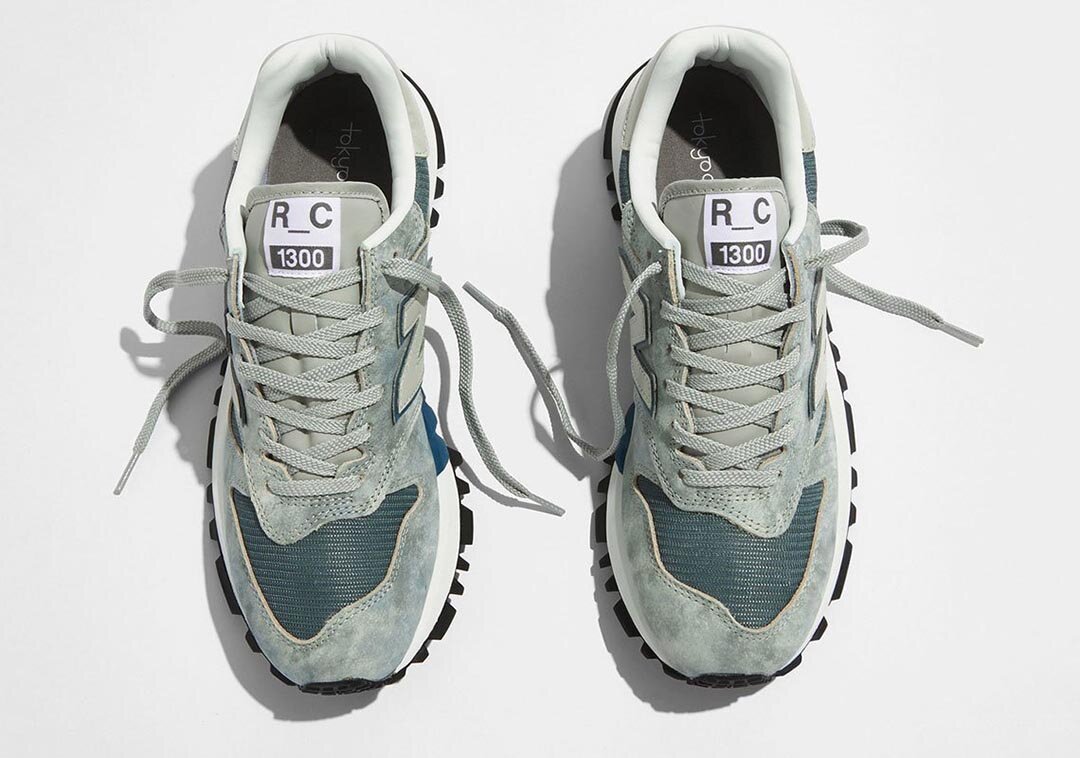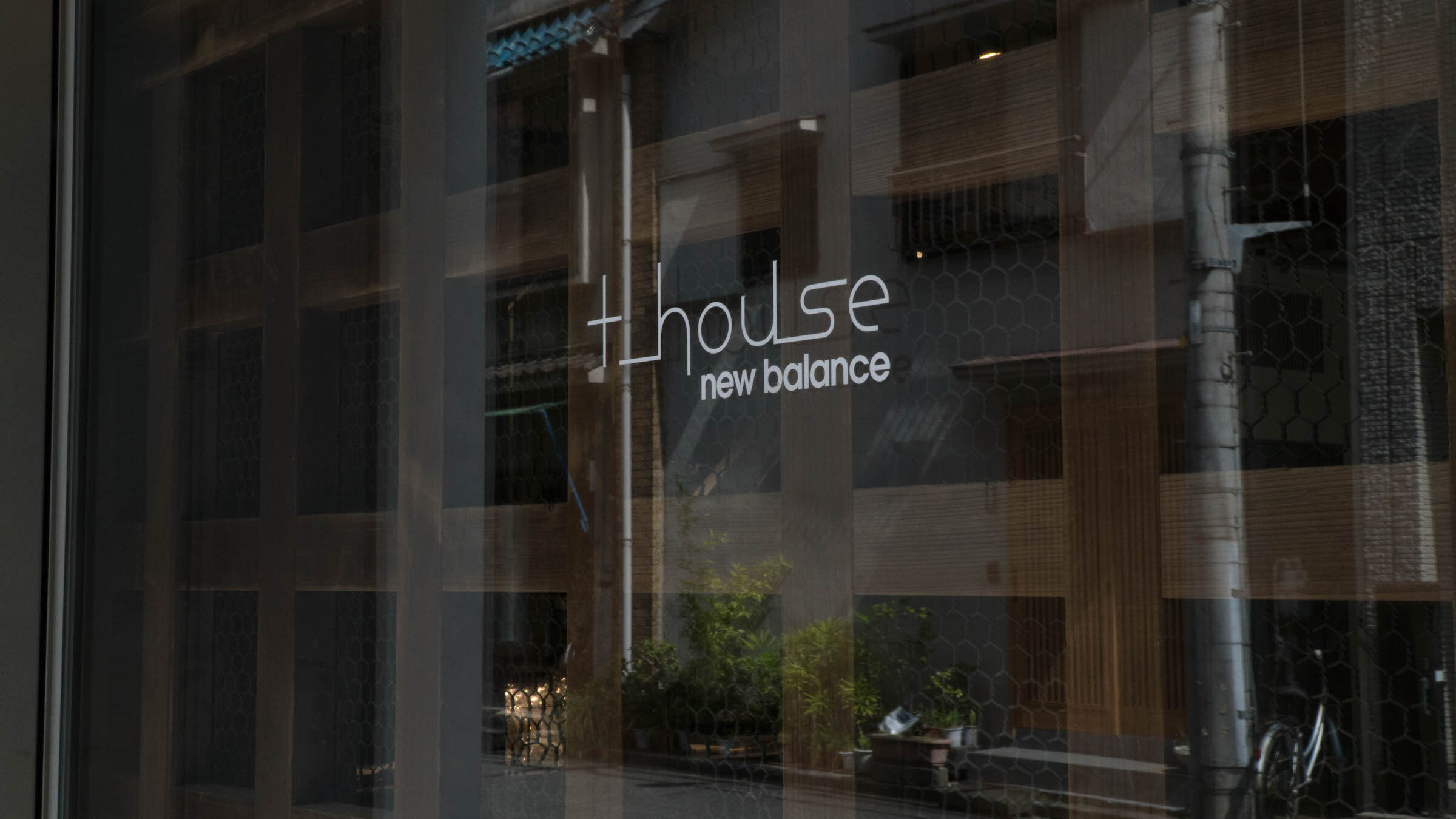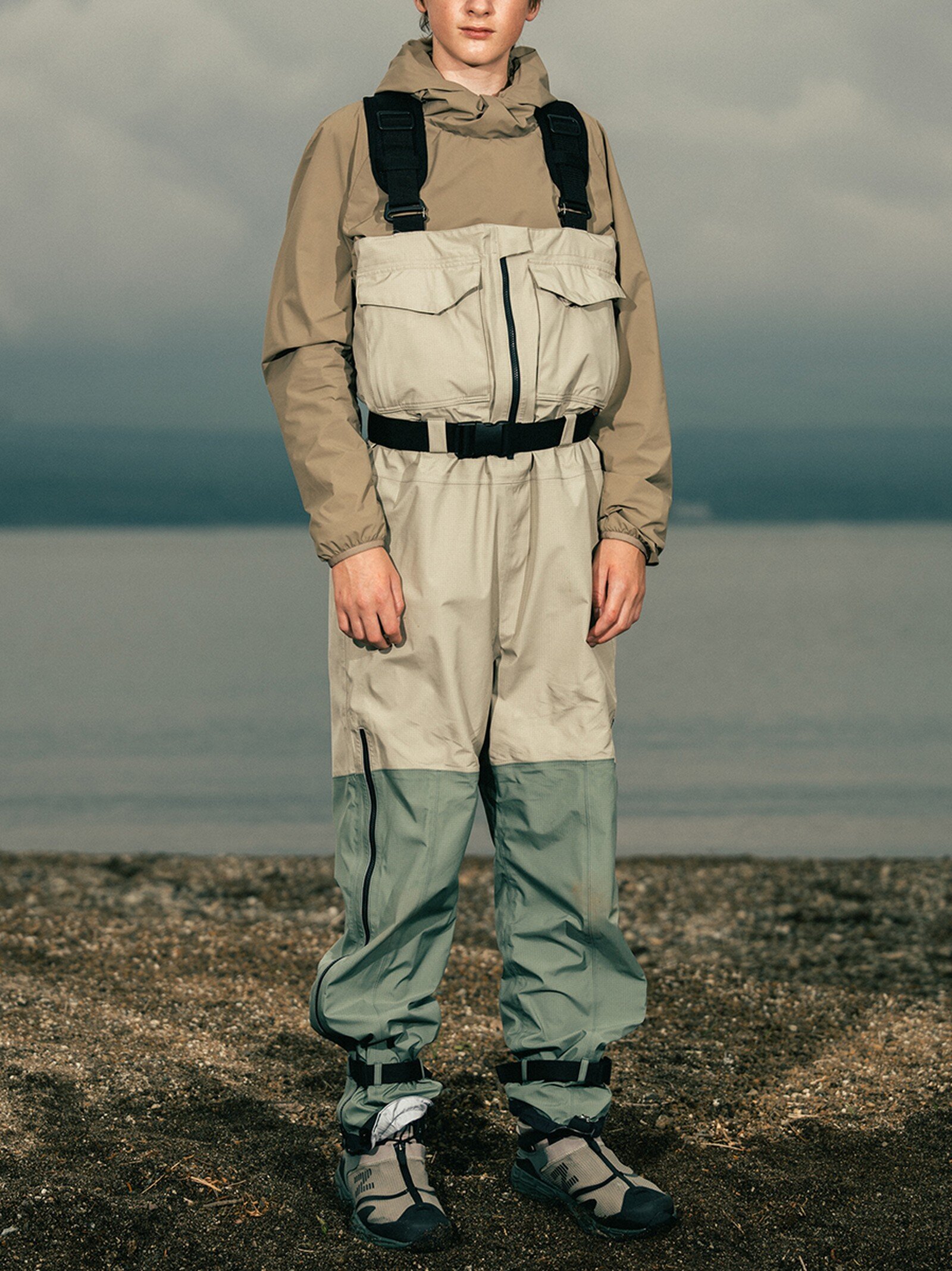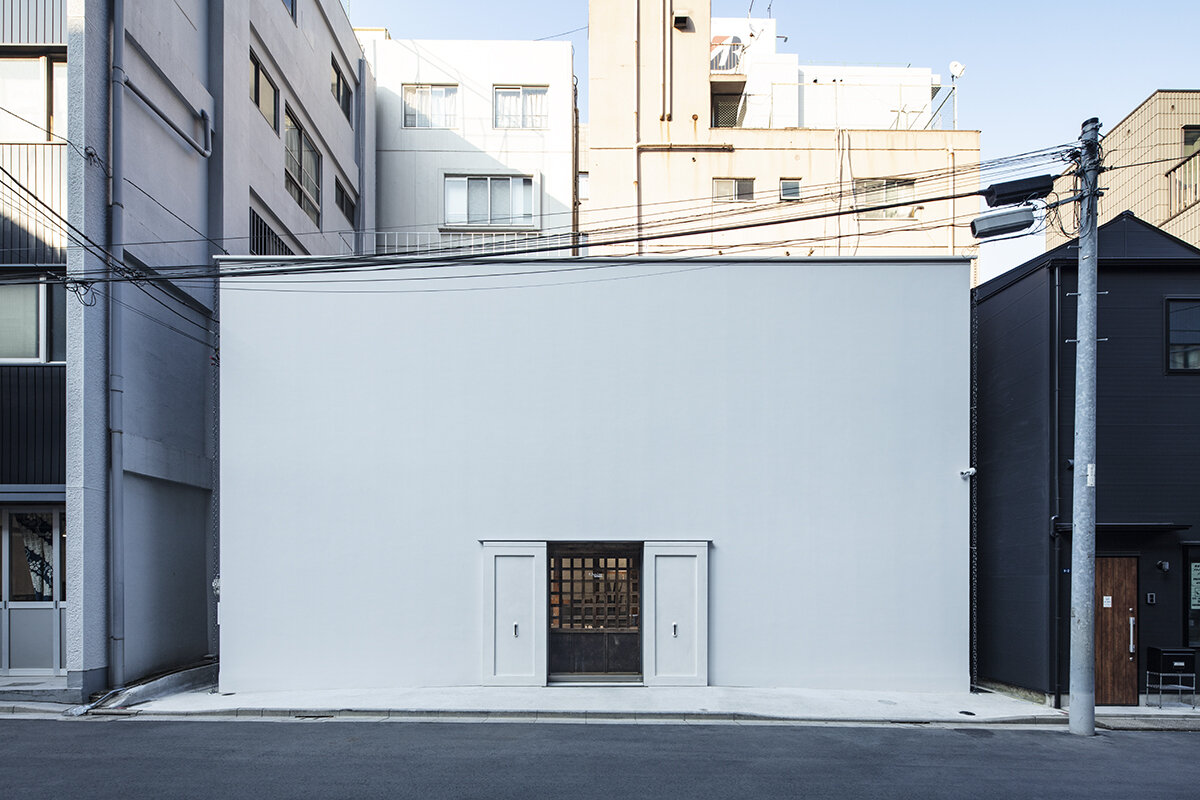Tokyo Design Studio - The Future of New Balance

New Balance’s Tokyo Design Studio embodies the same spirit as their brand new location in Nihonbashi Hamacho- far from the hustle of traditional commercial locations like Shibuya and Shinjuku, the mysterious team operates under the notion of “tangible production first, questions later”.
This is apparent with the way they’ve chosen who to work with, and what they’ve decided to produce. With ongoing collaborations with the likes of AURALEE and Snow Peak to their very own inline innovations, Tokyo Design Studio is showcasing to the world the future of New Balance.
One individual who you can see sporting the Tokyo Design Studio R_C2’s is W. David Marx, author of the cultural history book, Ametora: How Japan Saved American Style while giving Chicago’s Notre a tour through his favourite spots in Northwest Tokyo.
It’s fitting to see one of the great minds heavily involved in cultural analysis featured in a TDS design, as there are many clear parallels that can be drawn between Tokyo Design Studio and Ametora. New Balance Tokyo Design Studio itself is a great example of the Japanese interpretation pushing forward a classic American brand. These interpretations bind together traditional structure, materials, processes, and marry them with modern innovation.
New Balance TDS R_C1300
… featuring a rugged Vibram Sole
Pushing boundaries and the very limits of conventional design is the core of what the New Balance Tokyo Design Studio aims to do. Taking inspiration from traditional sources, the team seamlessly blends old with new, eyeball-gratifying aesthetics with function. This is all done for the opportunity to share the importance with consumers that these elements are important when split apart in their own right, but blended together, they represent the very ethos of “adjusting to life”.
An entity like the New Balance Tokyo Design Studio needs an equally as impactful headquarters that reflect the mindset of a team that tirelessly innovates under their four major pillars: precision, nature tech, sports craft, and protection. It’s fitting that the studio space that’s responsible for bringing the Niobium concept to life, is also a modern modular masterpiece in its own right. Bundling understated traditional fixtures that teeter between obsessively “Japanese” and inherently avant-garde stylings, T-HOUSE is a perfect personification of how the team sees the future of Tokyo Design Studio.
Unravelling the layers here of what’s next for the team will be difficult, but join us as we pull back the curtains on the secret laboratory with Shugo Moritani - Creative Design Manager at New Balance Tokyo Design Studio.
Shugo — Thank you for taking the time. Can you please tell us about yourself and your role within Tokyo Design Studio?
I’m the creative design manager of TOKYO DESIGN STUDIO New Balance (TDS).
Creative Design Manager of TDS - Shugo Moritani
Who all makes up the entire Tokyo Design Studio team? Can you please introduce everyone?
TDS is a pure global team located in Boston (USA), Taichung (Taiwan), and Tokyo (Japan).
TDS is built on four pillars — precision, nature tech, sports craft and protection. Can you please break each one down and how these pillars are applied in every TDS silhouette?
“Nature Tech” is about utilizing natural materials with natural function with technical benefits resulting in premium quality. With collaboration/communicating with the performance innovation team at Boston HQ, “Precision” is focused on technical solutions for precise performance, surface, and foam. ”Sports Craft” is a combination of traditional handcrafted techniques and contemporary technology. Finally, Protection” provides us a way to keep the body comfortable and safe from the elements. Each of the TDS projects/Concepts are created by one or a combination of these themes. We think it's important to share our ideas with the consumer.
Please, walk us through your design process — when designing a new silhouette, what is your starting point?
It starts from daily life and is completed by daily life. It’s a simple process actually, “how can I improve our lifestyle?”
You recently launched another chapter of your ongoing collaboration with Snow Peak. What makes the brand such a suitable partner for the New Balance Tokyo Design Studio, and where do your ideas meet and complement each other?
Unique and independent creative culture and brand philosophy with respecting craftsmanship. And it also may be partly due to the essence of Tokyo/Japan.
What was the inspiration behind the “Niobium” Concept 1? What sparked this brand new TDS silhouette?
Adjusting holistic environments to match what we faced in urban lifestyles. Not only for different types of weather conditions but also different types of lifestyle situations.
What can we expect from TDS in the near future? Any projects we should look out for?
We are looking forward to launching new shoes with a TABI upper, created from a respect of Japanese craftsmanship. It's going to be unique and special.
Congratulations on the grand opening of “T-HOUSE” — can you tell us more about this concept store and what it means for TDS?
T-HOUSE is the home of TDS. Representing the concept of purity, tranquillity, harmony, and respect. The Chashitsu ( Tea House) holds a distinct place in Japanese culture. Merging traditional Japanese architecture with modern elements, we will recreate this concept to house our most pinnacle lifestyle product. Functioning as part lifestyle innovation studio, energy showroom, gallery and experience store, this will also be the place where we conceive our most innovative ideas and welcome our top tier partners/consumers to share our vision for the future of the NB brand.
T-HOUSE is located far away from the busy streets of Harajuku and Shibuya; was this an intentional move to position the design studio and its products distant from the fast-moving and fleeting fashion industry?
The east side of Tokyo is traditionally a manufacturing area. A lot of small factories still exist and protect historical techniques and craftsmanship. The location of T-HOUSE/TDS needs to be unique and innovative as a concept outside the confines of traditional commerce.
T-HOUSE fuses a concept store and a design studio, bringing together consumers and designers in a new and modern way. What do you hope to learn from these two living under one roof? On a design studio level, what kind of direct feedback do you hope to get from the store manager on your designs?
We already received great reactions, we’d like to create and share the creative culture of New Balance. Not just talking about footwear and/or apparel but also including art, music, craft, books, etc.
Early Concept of the T-HOUSE
For the design of T-HOUSE, you reassembled an old Japanese warehouse inside a new building, fusing the old with the new. When the Sabukaru team visited the T-HOUSE, we were impressed by how the old warehouse fused with the actual design and became functional in a new form. How important was it for you to not just display the past, but make it functional and work?
Quality and utility are at the centre of New Balance. Our products must be functional, comfortable, and innovative. The foundation is the same for T-HOUSE architecture just with the respect and sensibility of Japanese design.
Old Skeleton of the reassembled Japanese warehouse
What do you want consumers, fans, friends & family of the brand experience when visiting the T-HOUSE? What should they take away from it - besides beautifully crafted products.
We hope that T-HOUSE is a touchpoint when talking about the future of New Balance. I don’t have a clear answer right now, we’ve just started, but we are excited about this new challenge.
Thank you very much for your time Shugo !!
About the Authors:
Joseph Wang is a Washington D.C. based storyteller focused on the history and influence that brands have on people, and vice versa. Connecting these stories to his roots, and immersing them with context and close relationships are what he strives for.
Charlie Duong is an Amsterdam based designer and writer. He utilizes fashion, music, and technology as a medium to shed light on individuals, culture, and design thinking.
Credits:
Interview by Charlie Duong & Adrian Bianco
Text by Joseph Wang
Studio Photography by Aki Kurasaki

